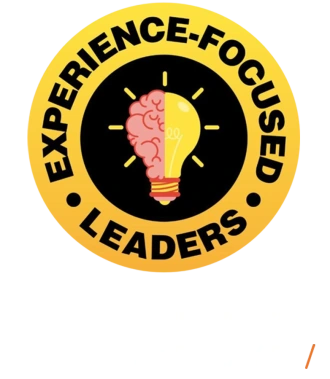Listen to the Podcast Episode on Your Favorite Platform

.svg.png)

The Primal Brain Behind Effective Marketing
.png)
We're the most social animal on the planet, we formed the largest social groups, and we literally can't survive by ourselves. So it's very important for us to be loyal to the tribe. A lot of things come out of that. For example, it's more important for us to be a good team player than to be right. (Tim Ash)
(00:00-07:23)
Tim Ash explains his unique journey, which began with a double major in computer engineering and cognitive science at UC San Diego, nearly completing a PhD in AI and neural networks. He then founded SiteTuners, a digital marketing agency that generated significant value for top companies like Expedia, Nestle, and Google. His work emphasized neuromarketing, or the application of evolutionary psychology to consumer behavior.
Tim's insights reveal that understanding the brain's evolutionary roots is crucial for effective marketing. He describes how our primal instincts, such as the drive for survival, hunger, and social belonging, influence decision-making far more than rational thought. Emotions play a key role in prioritizing choices, often subconsciously.
Alex Shevelenko and Tim Ash delve into how modern marketing can harness these insights. Tim Ash highlights the importance of tribal loyalty and social conformity, explaining how these ancient instincts shape contemporary consumer behavior. Understanding these dynamics, Tim Ash argues, is essential for any marketer aiming to truly connect with their audience.
.png)
Mastering Conversion: The Power of Social Proof and Ethical Influence
.png)
We can't think about every decision we make all day long. In fact, we make poorer decisions later in the day, when we've used up our reserves of what's called executive function, our conscious thought. (Tim Ash)
(07:23-14:32)
Tim Ash highlights the concept of social proof, explaining how it influences our decisions. He shares a simple example: if you're choosing between two restaurants and one has a long line while the other is empty, you're likely to join the line. This tendency to follow the crowd, known as social proof, is a powerful tool in marketing. He also recounts a study where background music in a store influenced wine purchases, demonstrating how subtle cues can steer our choices without us even realizing it.
The conversation then shifts to the ethical considerations of using psychological tactics. Tim Ash discusses how marketing strategies can be used for both positive and negative outcomes. For instance, placing healthy food at the start of a cafeteria line can nudge people towards better choices. On the flip side, manipulative tactics can also be used to foster negative behaviors, like creating divisions among people. The key is to use these tools responsibly to guide people towards beneficial decisions.
Alex Shevelenko and Tim Ash explore how to encourage long-term positive behaviors beyond just initial conversions. They discuss strategies for helping people make better decisions, such as automatic savings plans that deduct a portion of salary increases for retirement funds. These methods help people make beneficial choices effortlessly.
Tim Ash also touches on the importance of executive function, our conscious decision-making capacity, which diminishes as the day progresses. Marketers can support better decision-making by understanding and working with these cognitive limitations.
The episode wraps up with a discussion on practical applications, particularly in the context of employee benefits. Alex Shevelenko highlights the challenge of engaging employees with benefits programs and how companies can use psychological principles to increase participation and improve outcomes. By making information accessible and relevant, and by nudging employees towards beneficial behaviors, companies can maximize the impact of their investments in employee well-being.
.png)

The Secret to Smart Conversion: Leveraging Defaults and Social Proof
.png)
If you create content for that awareness and interest stage before making the decision, even before your company can financially benefit from it, that's where I really need the support. And once you lock me into you guys as a good source of information, then I'm much more likely to stay with you. (Tim Ash)
(14:32-21:18)
Tim Ash begins by redefining conversion beyond the typical sales-driven context. He explains that conversion can encompass various actions, such as clicking a link, filling out a form, making a phone call, or consuming content. These actions should be viewed as part of a customer's journey, which starts with awareness and interest before leading to a decision.
One key strategy Tim Ash emphasizes is the use of smart defaults. He shares the example of organ donation policies: in some places, individuals must opt-in to become donors, resulting in low participation rates. In contrast, countries that have an opt-out policy see much higher donor rates. This principle can be applied to marketing by setting the default option to what is most beneficial for both the business and the customer.
Tim Ash also highlights the role of social pressure in influencing behavior. When people make commitments publicly or within a group, they are more likely to follow through. For example, having a workout buddy increases accountability and the likelihood of sticking to a fitness routine. This principle can be leveraged in marketing to encourage positive actions through community and peer influence.
Alex Shevelenko and Tim Ash discuss the importance of reducing complexity in decision-making. Tim Ash argues that providing too many options can overwhelm users, leading to inaction. Instead, marketers should prioritize the most valuable conversion actions and make them prominent on their websites and landing pages. Clear choice architecture helps guide users toward desired actions.
While it's crucial to educate users, Tim Ash notes that it's equally important to make content accessible and engaging. He suggests offering information in various formats, such as videos, slides, and interactive quizzes, and breaking it into bite-sized chunks. This approach caters to different preferences and attention spans, making it easier for users to absorb information and stay engaged.
.png)
Shrinking the Overload: How to Keep Attention and Make Decisions Easier
.png)
We can't make logical decisions. All the rational brain can do is give us options. They're automatically prioritized by the strength of our emotional reaction. So it's like, “I need to do this or I need to avoid this.” The ranking is happening emotionally. (Tim Ash)
(21:18-27:59)
Alex Shevelenko starts by emphasizing the importance of reducing informational overload. Tim Ash agrees and highlights the need for frequent "attention resets", especially in video content, suggesting that these resets should happen every seven to eight minutes. This approach can keep viewers engaged, much like how Netflix structures its series to maintain attention through tension and breaks.
Tim Ash points out the difference between entertainment decisions, like choosing a show on Netflix, and more pressing marketing decisions. While we might spend hours leisurely selecting entertainment options because it's enjoyable, marketing decisions are often about solving a problem as efficiently as possible. He notes that people prefer to spend minimal time on these decisions.
The conversation shifts to the varying degrees of decision-making effort. For significant decisions, like choosing a spouse or buying a car, it's natural to invest a lot of time and research. These decisions have long-term consequences, so people tend to act as maximizers, aiming to make the best possible choice. For smaller, less impactful decisions, people are more likely to act as satisficers, choosing the first acceptable option to save time and effort.
Tim Ash argues that pure rationality in decision-making is a myth. Our emotional responses prioritize our options, influencing our decisions subconsciously. He uses the example of hiking shoes to illustrate how context and urgency can shift our decision-making approach from a quick, satisficing choice to a more detailed, maximizing one if the stakes are high.
The speakers discuss the concept of maximizers (who seek the best possible outcome) versus satisficers (who settle for "good enough"). Tim Ash stresses that while some people may lean towards one approach, the context of the decision often dictates which strategy they use. Ultimately, the goal is to find a balance, making decisions efficiently without getting bogged down by unnecessary details.
.png)

The Illusion of Rationality: Understanding Decision-Making in Marketing
(27:59-35:46)
Tim Ash kicks off the conversation by debunking the myth that people make rational decisions. He explains that our choices are driven by emotions and only later rationalized by our conscious minds. This concept is illustrated with a quote from science fiction author Robert Heinlein: "Man is not a rational animal, man is a rationalizing animal." This means that the reasons we give for our decisions are often just post-hoc justifications.
The speakers discuss how emotional triggers, like background videos or dynamic navigation, can create an immediate sense of connection and satisfaction. These elements often resonate with people on a deeper level, aligning with their self-perception and goals, even if they rationalize their choices differently later on.
Tim Ash shares insights from his experience with usability testing, emphasizing the importance of time constraints. By giving users limited time to complete tasks, marketers can better simulate real-world conditions where attention spans are short. This approach helps reveal true user behaviors, which are often driven by instinct rather than rational thought.
Don't rely solely on focus groups for decision-making insights. Instead, Tim Ashes advocates for observing actual user behavior. People often rationalize their actions when asked to explain them, which can lead to misleading conclusions. Watching what users do, rather than listening to what they say, provides more accurate and actionable data.
The conversation shifts to the challenge of balancing informative content with the risk of distraction. Alex Shevelenko points out that while educational content is essential, it can also lead users away from the intended path if not carefully managed. For example, embedding videos within a site can be beneficial, but if those videos redirect users to platforms like YouTube, they may never return to the original content.
The speakers agree that a seamless user experience is crucial for retaining attention and guiding users through their journey. By offering varied content formats and ensuring users remain within the intended environment, marketers can nurture interest and gradually lead users towards conversion.
.png)
Mastering Micro Conversions
(35:46-42:43)
Tim Ash challenges the traditional concept of a linear sales funnel. He advocates for viewing the customer journey as a series of sideways steps, where each micro conversion is crucial. These small actions—like consuming content or engaging with a video—are vital for advancing the customer towards a final purchase decision. If any of these steps fail, even early ones, the entire process can break down.
Alex Shevelenko acknowledges Tim Ash's point, emphasizing that educational steps themselves are micro conversions. These moments help build trust and momentum, gradually guiding the customer forward. Instead of pushing for an immediate sale, marketers should focus on creating valuable, stage-appropriate content that fosters trust and engagement.
Tim Ash highlights the unique challenges of B2B marketing, where decisions often involve multiple stakeholders and higher stakes. Unlike consumer purchases, B2B decisions carry company-wide implications, which means marketers must address the specific needs and concerns of various roles within an organization. Tailoring content to these roles—such as CFOs or end users—ensures that each decision-maker feels understood and supported.
One key takeaway is Tim Ash's concept of "greedy marketer syndrome," where companies focus solely on bottom-of-the-funnel actions to make money. Instead, he advises addressing the entire customer journey, including the early stages where customers are simply seeking information and education. By providing valuable content throughout, companies can nurture relationships and build long-term trust.
Alex Shevelenko shares an example of a company that created a detailed "marketecher" system, allowing users to choose their role and specific business goals. This personalized approach acknowledges the complexity of B2B decision-making, where multiple personas and goals must be considered. Tim Ash agrees, stressing that focusing on roles and tasks—rather than broad personas—leads to more effective and relevant content.
Both speakers agree that designing content around specific roles and tasks is essential for success. This approach ensures that every piece of content addresses real needs at various stages of the customer journey. By doing so, marketers can create a seamless and supportive experience that helps customers make informed decisions.
.png)

Navigating the Complexity of B2B Sales: Understanding Roles and Responsibilities
(42:43-49:08)
Tim Ash highlights the necessity of tailoring landing pages to distinct roles. Instead of a generic approach, he advocates for asking visitors upfront about their roles—whether they are CFOs, end users, or system administrators—and then guiding them to subsites tailored to their specific needs. This targeted approach ensures that the content remains relevant and engaging.
Alex Shevelenko concurs, stressing the importance of keeping users within the scope relevant to their roles. He warns against redirecting users to broader, less specific content, and emphasizes the value of embedding videos directly on the site to retain visitor engagement.
Tim Ash shares insights from his experience running the Conversion Conference, where he provided attendees with guides to justify their participation to their superiors. This concept of "champion enablement" involves equipping internal advocates with the materials they need to persuade decision-makers, which is crucial in complex B2B sales involving multiple stakeholders.
The speakers also discuss the increasing complexity of B2B sales processes. They note that, unlike in the past, modern sales often involve numerous decision-makers. This complexity necessitates a deep understanding of the concerns and priorities of each role involved in the decision-making process.
.png)
De-Risking Decisions: Addressing Individual Concerns in B2B Sales
.png)
Group norming and fitting in with the corporate culture is important. There's some with “move fast and break things”, Zuckerberg's original idea. There's plenty of cultures that don't rock the boat and do everything by consensus. (Tim Ash)
(49:08-55:09)
Alex Shevelenko talks about addressing each role's unique problems and needs in a frictionless manner. Tim Ash emphasizes that the ultimate goal in a B2B sale is to create a sense of safety for the buyer. He explains that decision-makers often prioritize not getting fired over making the best choice, citing the old adage, "You don't get fired for buying IBM", which illustrates the desire for safe, low-risk decisions.
The speakers discuss the difference between early adopters and mainstream buyers. Tim Ash points out that smaller companies or large companies introducing new offerings often need to target early adopters—those who are willing to take risks and seek promotions rather than just avoiding getting fired. He references Jeffrey Moore's book, Crossing the Chasm, which addresses how to transition from early adopters to the mainstream market.
Alex Shevelenko notes that early adopters in large enterprises often have entrepreneurial backgrounds or are involved in innovation ecosystems, making them more open to new ideas. Tim Ash adds that company culture plays a significant role in decision-making. Companies with a culture that encourages innovation and risk-taking will have different behavioral norms compared to those that prioritize consensus and risk aversion.
.png)

Harnessing Human Behavior in B2B Sales: The Power of Pain and Stories
.png)
We're all human, tell stories. Everything should be wrapped up in stories. A lot of B2B companies make the mistake of relying too much on data, ROI, financial stuff or technical specs. Big mistake. We're designed to consume experiences in stories. (Tim Ash)
(55:09-1:00:41)
Alex Shevelenko starts by noting that different departments within a company, such as sales and manufacturing, often have distinct subcultures. Tim Ash agrees, explaining that while salespeople might act as mavericks, the overarching company culture typically remains top-down, influencing all departments.
They then discuss how conversion rate optimization (CRO) is a measurable way to drive behavior change. Tim Ash highlights three key takeaways for marketers:
• Lean Into Pain: Negative motivation is more effective than positive motivation. For example, selling teeth whitening by highlighting the embarrassment of yellow teeth is more compelling than promising a bright smile. Marketers should use pain points to move people out of their comfort zones.
• Tell Stories: Humans are wired to consume and remember information through stories. Unlike dry data or technical specs, stories resonate deeply, making them a powerful tool for conveying experiences and driving engagement.
• Know Your Audience: Understanding your audience is crucial. Tim Ash argues that businesses often make the mistake of being product-led rather than audience-led. Knowing your audience allows you to design effective campaigns, business models, and messaging tailored to their needs and preferences.
Alex Shevelenko humorously remarks on the effectiveness of Tim Ash’s points, expressing his gratitude for the insights shared. Tim Ash wraps up by challenging the concept of Product-Led Growth (PLG), emphasizing that truly knowing your audience is the foundation of successful marketing.
.png)
Audience First: The Key to Successful Marketing
.png)
Have a clear editorial voice that goes through all of your content and marketing. And if you don't have that basic of like, “I'm flying the flag, follow me, you're in my tribe”, you will not be successful based on that product feature level ever. (Tim Ash)
(1:00:41-1:05:41)
Alex Shevelenko references Wes Bush, a PLG advocate, and notes the value of a good controversy. Tim Ash argues that starting with the audience's needs and pain points is essential. He emphasizes that people don't buy products — they seek solutions to their problems. For instance, people buy drills not for the drill itself, but for the holes they need to make.
Knowing what troubles your audience allows you to design products that solve real problems. Without this understanding, even a minimum viable product can fail to resonate.
Tim Ash stresses the importance of defining a very specific audience before designing products or messaging. A broad, undefined audience can dilute the effectiveness of marketing efforts.
Products should connect emotionally with the audience. Successful companies often start with a clear understanding of their audience and customize their products to meet those needs.
For point solutions, having an origin myth and a clear editorial voice is crucial. This approach attracts a loyal tribe and fosters a strong connection with the audience, which is more effective than focusing solely on product features.
Tim Ash also highlights the importance of stories in marketing. Stories resonate more with people than data or technical specs, making them a powerful tool for engagement.
The conversation wraps up with Tim Ash inviting listeners to explore his books and services. He offers executive advisory for digital growth, providing on-call support to senior executives to help drive their companies forward.
For more on Tim Ash's work and to connect with him, visit primalbrain.com and timash.com.
.png)
Check the episode's Transcript (AI-generated) HERE.
Other Episodes

Godard Abel | CEO of G2
S 01 | Ep 6 Where You Go for Software: Reach Your Peak


Dean Stocker | CEO of Alteryx
S 01 | Ep 8 Turning Your Customers Into Your Biggest Champions


Peter Fader | Co-Founder of ThetaCLV
S 01 | Ep 10 Turning Your Marketing Into Dollars

Author

Experience-focused Leaders is the #1 Multimedia Podcast! We talk to senior business & tech leaders about the experiences that move forward organizations, customers and society at large. True to form, we mix audio, video, web and eBook formats to turn these authentic conversations into personalized nuggets you'll remember & use.



.png)
